Toad Killer ($TOAD) Slippage Calculator
Critical Warning
WARNING: $TOAD has extremely low liquidity. Standard slippage settings may cause transaction failures.
Based on article data, average slippage is 15%+ for $TOAD trades. Setting slippage below 15% may cause transactions to revert.
Slippage Calculator
Transaction Impact
Estimated results based on $TOAD's low liquidity:
Ever stumbled upon a crypto token that looks like a joke but has a real price tag attached? Toad Killer ($TOAD) is exactly that - a meme‑coin that popped up in the Ethereum ecosystem with more hype than substance. If you’re wondering what it is, whether it’s worth a glance, and how you might actually buy or sell it, this guide breaks down everything you need to know.
What is Toad Killer ($TOAD)?
Toad Killer ($TOAD) is a meme cryptocurrency launched sometime between late 2023 and early 2024. The token lives on the Ethereum blockchain and follows the ERC-20 standard, which means it can be stored in any wallet that supports Ethereum‑based assets.
The official site, toadkiller.dog, offers little beyond a playful logo and vague promises of future utilities such as a “Toad Battle Arena” and NFT integration. No whitepaper or technical roadmap is publicly available, reinforcing the token’s reputation as a pure speculative meme.
Technical Specifications
- Blockchain: Ethereum (ERC‑20)
- Token symbol: $TOAD
- Total supply: Not officially disclosed - tracking sites show wildly differing figures.
- Decimals: 18 (standard for ERC‑20)
Because the contract code is publicly viewable on Etherscan, anyone can verify that the token adheres to the ERC‑20 interface, but there are no special functions (like auto‑burn or staking) that add value beyond the basic transfer capability.
Current Market Data (October2025)
Tracking platforms disagree on the exact price, highlighting the token’s low liquidity and data‑feed issues:
- CoinCodex (Mar2025): $0.0829, 21.2% 24‑h volatility.
- DigitalCoinPrice (Dec2024): $0.00000000672.
- XT.com (Oct2025): $0.0000000029.
Trading volume mirrors the price discrepancy. XT.com reported roughly $84k in 24‑hour volume on Oct142025, while DigitalCoinPrice showed just 3,880units traded a month earlier. Market‑cap listings often read $0.00, indicating an effectively negligible valuation.
Technical indicators from CoinCodex (Mar2025) show a 50‑day SMA of $0.0825, a 200‑day SMA of $0.0830, and a 14‑day RSI of 68.8 - suggesting mildly overbought conditions despite the overall market’s “Greed” sentiment (Fear &Greed Index 70).
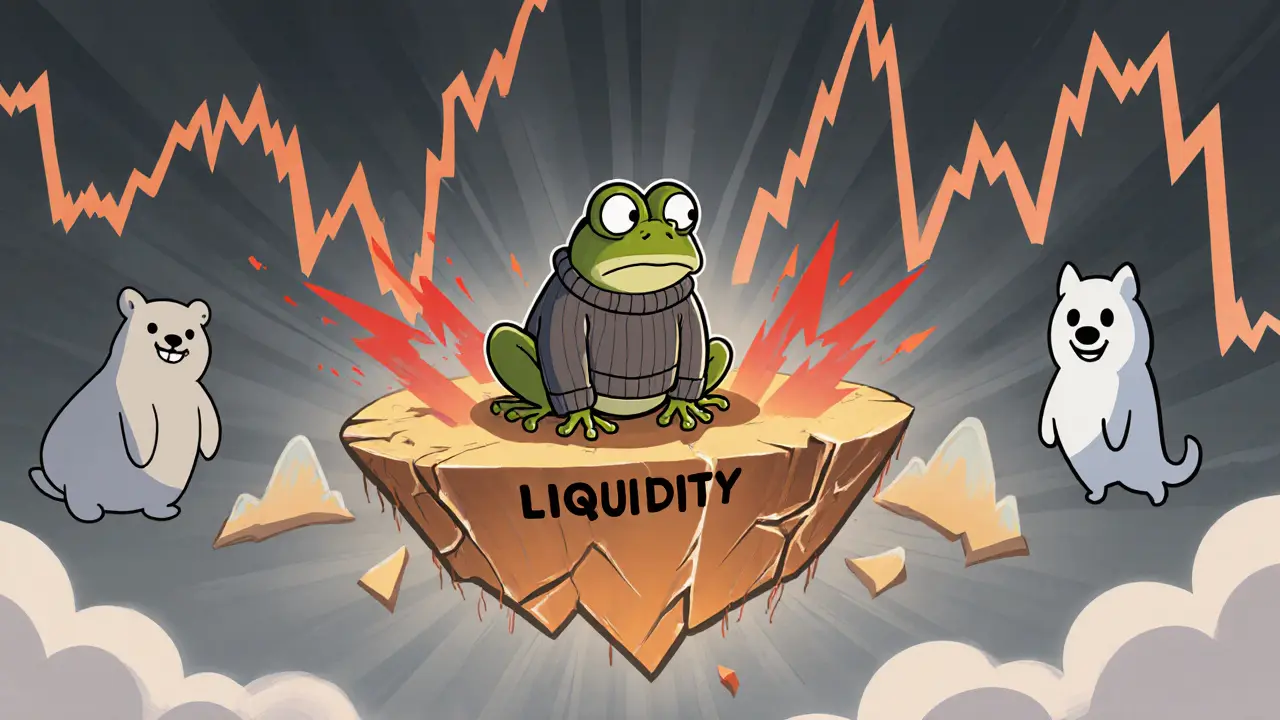
How Does $TOAD Stack Up Against Other Meme Coins?
| Token | Blockchain | Market Cap Rank | 24‑h Volume | Community Size (Telegram) |
|---|---|---|---|---|
| Dogecoin | Bitcoin‑based (Dogecoin‑fork) | #11 | $1.2B | ≈800k |
| Shiba Inu | Ethereum | #21 | $540M | ≈450k |
| Pepe | Ethereum | #79 | $78M | ≈120k |
| Toad Killer | Ethereum | #7500‑8000 | $84k (peak) | ≈150 |
From the table it’s clear that $TOAD operates in the ultra‑micro‑cap tier, far behind even the newest meme players. Liquidity, community size, and exchange listings are all dramatically lower.
Red Flags and Risks
- No utility. Unlike Dogecoin’s tipping ecosystem or Shiba Inu’s DeFi suite, $TOAD offers no payment, staking, or governance features.
- Extremely thin order books. Users on Reddit reported a 15‑%+ slippage on average, with many trades failing outright due to “insufficient liquidity.”
- Price data inconsistencies. Eight orders of magnitude between listings suggest possible token‑splits, fake trackers, or outright data manipulation.
- Anonymous team. The website claims a “mysterious team of well‑known figures,” but no identities, audited code, or development activity can be verified.
- Negative sentiment. Over 90% of comments on CoinGecko, Bitget, and Reddit describe $TOAD as a pump‑and‑dump scheme.
In short, the token looks like a classic meme‑coin pump that never gained a sustainable community.
How to Buy (or Sell) $TOAD - Step‑by‑Step
- Acquire ETH or USDT on a major exchange (e.g., KuCoin or Binance).
- Transfer the funds to a wallet that supports ERC‑20 tokens (MetaMask, Trust Wallet, etc.).
- Open a decentralized exchange (DEX) like Uniswap.
- Select “ETH” (or “USDT”) as the input token and copy the $TOAD contract address from Etherscan.
- Paste the address into the “To” field.
- Set a slippage tolerance of at least 15% - lower settings usually cause the transaction to revert.
- Confirm the swap, sign the transaction in your wallet, and wait for it to be mined (usually a few seconds on Ethereum’s mainnet).
Because most centralized exchanges list $TOAD only on a handful of platforms (KuCoin, Bitget), the DEX route is the most reliable, albeit risky.

Future Outlook - Will $TOAD Survive?
Analyst consensus is bleak. CoinCodex projects a modest 25% price drop from current levels over the next four months, with a short‑selling ROI of roughly 23%. DigitalCoinPrice’s long‑term forecast caps the all‑time high at $0.0000000123 by 2028 - a figure that would still leave the token’s market cap in the low‑four‑figure range.
Key reasons for the pessimism:
- Zero development. No GitHub commits since the token’s launch, meaning no new features or bug fixes.
- Liquidity drain. As investors sell, the thin order book creates larger slippage, accelerating the exit spiral.
- Regulatory pressure. While $TOAD itself hasn’t attracted SEC scrutiny, similar meme tokens were targeted in 2025, raising the risk of classification as an unregistered security.
Unless the anonymous team releases a genuine product (e.g., a functional DEX or NFT series) and substantially grows its community, $TOAD is likely to fade into the “zombie asset” category, eventually disappearing from price trackers altogether.
Key Takeaways
- $TOAD is a meme‑coin on Ethereum with no clear utility or roadmap.
- Market data is inconsistent; price ranges from $0.08 to sub‑nano‑dollar levels.
- Liquidity is extremely thin, leading to high slippage and frequent transaction failures.
- Community sentiment is overwhelmingly negative, labeling it a pump‑and‑dump scheme.
- Analysts expect limited upside; the token may become worthless within the next few years.
Frequently Asked Questions
What blockchain does $TOAD run on?
$TOAD is an ERC‑20 token that lives on the Ethereum network.
How can I buy $TOAD safely?
The most reliable way is to use a DEX like Uniswap. First acquire ETH or USDT on a major exchange, move it to an ERC‑20 compatible wallet, then swap for $TOAD using the contract address. Set a high slippage tolerance (≥15%).
Does $TOAD have any real use case?
No. Aside from being a speculative meme token, $TOAD offers no payment, governance, staking, or DeFi functionality.
Why are price listings so different across sites?
The token’s ultra‑low liquidity means a single trade can move the price dramatically. Some trackers pull data from different liquidity pools or even from separate token contracts that share the $TOAD symbol, creating eight‑order‑of‑magnitude gaps.
Is $TOAD a good long‑term investment?
Analysts largely view it as a high‑risk, low‑reward speculative play with a high probability of becoming worthless. Unless the team delivers a real product and builds a sizable community, the token is unlikely to retain value.
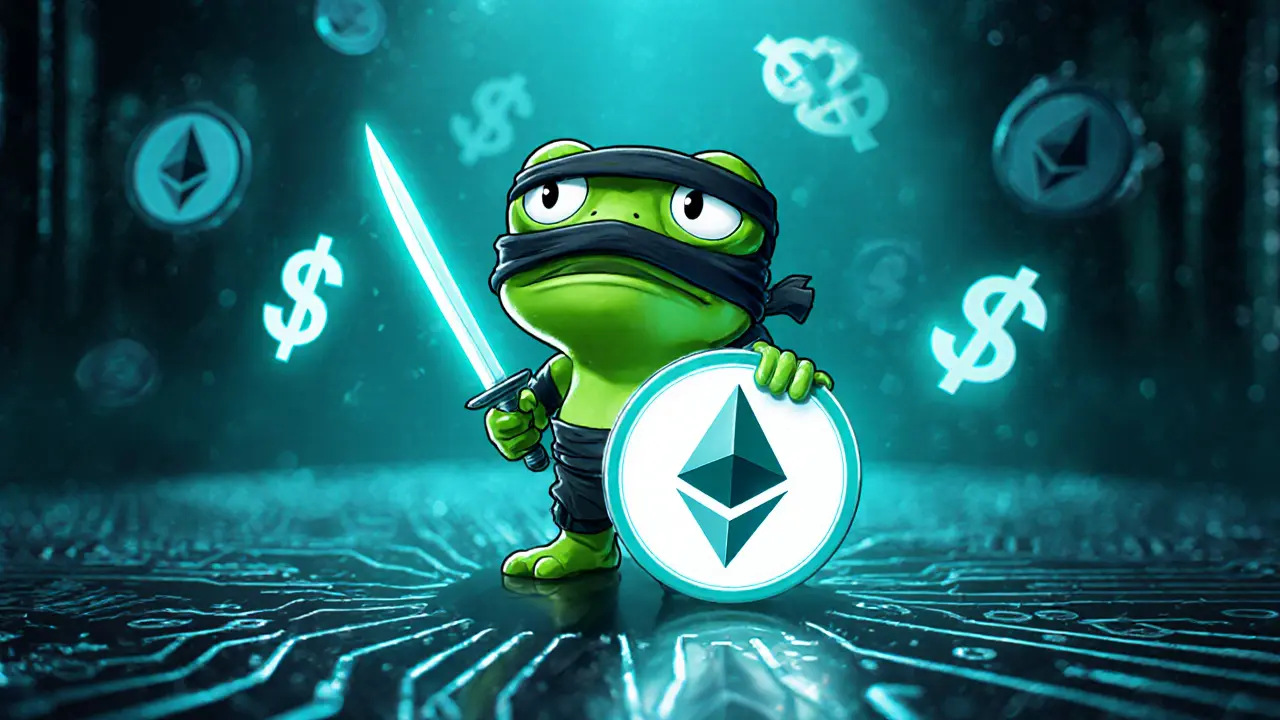
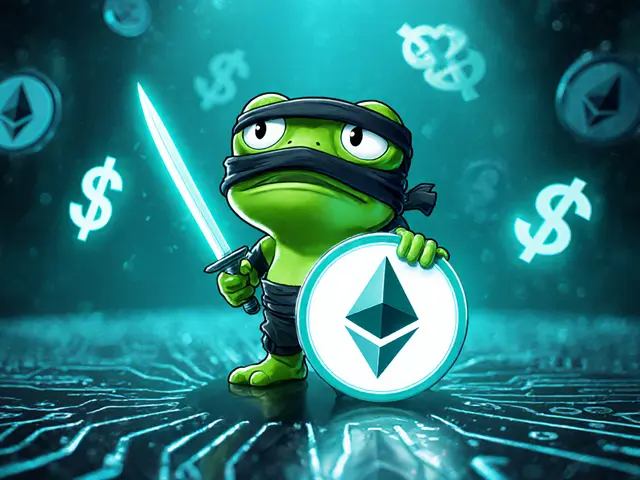
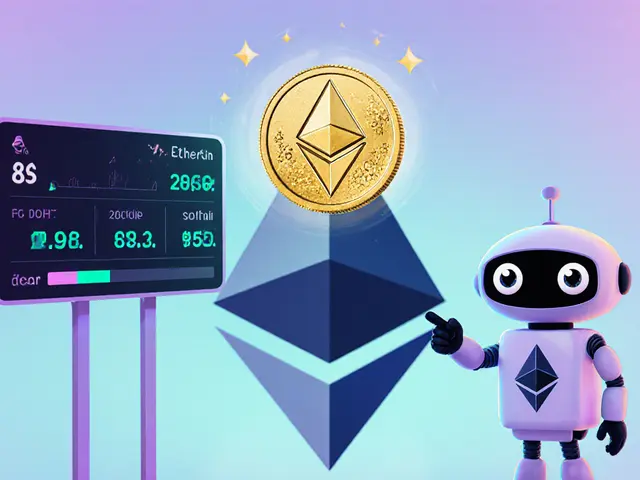
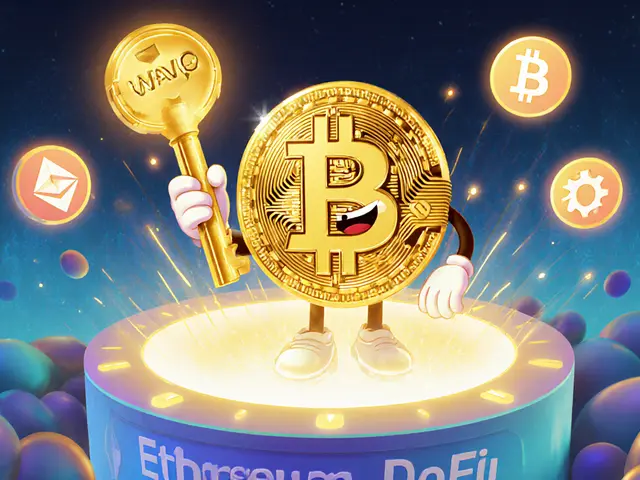
Comments
Whoa, $TOAD looks like a wild ride, but if you set that slippage tolerance high enough you might actually pull off a swap 😅. Remember, meme coins can pop up overnight, so keep a small portion of your portfolio in it if you’re feeling adventurous 🌱. Just don’t forget to double‑check the contract address before you hit “Confirm”.
This token epitomizes speculative folly.
In the grand tapestry of decentralized finance, $TOAD represents a fleeting echo of collective imagination. Its lack of intrinsic utility invites reflection on what truly gives value to a digital artifact. Perhaps the allure lies not in the code but in the narrative that surrounds it. Observing such phenomena reminds us that markets are as much about psychology as they are about technology.
The data is unequivocal: thin order books translate to exorbitant slippage, often exceeding fifteen percent, and the probability of transaction failure escalates sharply under those conditions. From a risk‑management perspective, allocating capital to a token with such liquidity constraints is inadvisable without a clear exit strategy. Additionally, the absence of verifiable development activity raises legitimate concerns about the token’s sustainability. It would be prudent to treat $TOAD as a speculative placeholder rather than a core holding.
The allure of $TOAD is rooted in the same meme‑driven hysteria that once propelled Shiba Inu to fleeting glory.
Yet unlike its more popular counterparts, TOAD suffers from an almost nonexistent community, as evidenced by a Telegram group that barely reaches triple digits.
Liquidity, the lifeblood of any tradable asset, is alarmingly thin, forcing traders to accept slippage well beyond fifteen percent.
Such slippage not only erodes potential profits but also increases the likelihood of outright transaction reverts.
The token’s price feeds are riddled with inconsistencies, swinging between micro‑dollar and nano‑dollar valuations depending on the exchange consulted.
This disparity is a red flag that suggests either fragmented contract deployments or deliberate data manipulation.
Moreover, the contract itself exposes no advanced functions-no burn mechanisms, no staking incentives-leaving investors with a bare‑bones ERC‑20 token.
The development pipeline is effectively dormant; no commits have been recorded on public repositories since the token’s inception.
Regulatory scrutiny on meme tokens has intensified in recent months, and while $TOAD has not been singled out, its opaque structure makes it a likely candidate for future enforcement actions.
From a portfolio perspective, allocating even a modest percentage of assets to $TOAD can dramatically increase overall volatility.
Should a mass exodus occur, the already fragile order books would collapse, creating a feedback loop of price decay.
Historical precedents show that similar tokens, once their hype wanes, fade into obscurity, often disappearing from price aggregators altogether.
If the anonymous team were to unveil a tangible product-perhaps the promised “Toad Battle Arena”-the narrative could shift, but no credible roadmap exists to substantiate such a claim.
In the meantime, the token remains a speculative gamble, more akin to buying a ticket for a carnival game than investing in a sustainable asset.
Prudent investors would therefore treat $TOAD as a high‑risk, low‑reward curiosity, allocating no more than a fraction of a percentage point of their total exposure.
Investing in such vapor is ethically dubious.
Listen, if you’re going to dip a toe into meme territory, set that slippage tolerance to at least fifteen percent and be ready for wild swings. Treat it as a learning exercise, not a retirement plan, and always keep your stop‑loss tight. Discipline beats hype every time.
One might argue that the very act of setting a high slippage tolerance reflects an acceptance of uncertainty inherent in speculative markets.
Yo r u even lookin at real data or just trust the hype? 15% slippag is a joke lol
While the informal tone captures excitement, it’s essential to ground any decision in verified on‑chain metrics and reputable exchange data.
Picture this: a lonely toad leaping across a barren blockchain desert, hoping someone will toss it a coin. That image mirrors $TOAD’s current state-an abandoned mascot yearning for a community. Unless the developers conjure a real use case, the toad will forever hop in obscurity. So, weigh your risk before you fund the frog.
The metaphor underscores the token’s isolation, yet it also reminds us that even minimal engagement can spark unexpected revival.
Is a meme token truly without purpose, or does its very absurdity challenge our definitions of value? 🙂
It’s a fun thought experiment, but reality checks matter more than philosophical musings.
For anyone considering $TOAD, start by verifying the contract address on Etherscan, then test a tiny trade on Uniswap with a 20% slippage buffer. Monitor the transaction receipt-if it reverts, you’ve saved yourself a bigger loss. Remember, patience and small steps are your allies in these risky waters 😊.
The recommended incremental approach exemplifies prudent risk management, aligning with established financial discipline while navigating the volatile meme‑coin landscape.
Honestly, the whole $TOAD thing feels like a joke that someone decided to monetize, so I’d stay far away unless you’re just in it for the memes.
Gotcha! If you treat it as pure fun and never risk more than you can lose, the experience can be entertaining 😎.